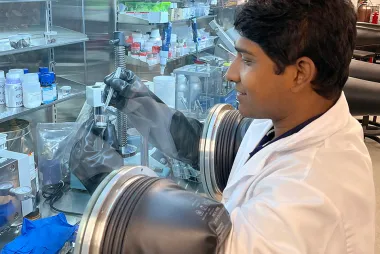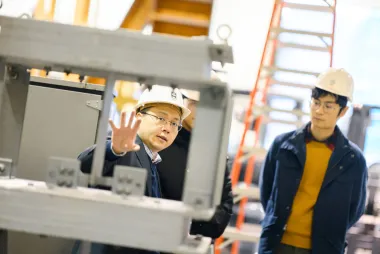Research breathes fresh air into classrooms at UBC Okanagan

If you’ve ever wondered why some folks never catch the office or school cold, where they’re sitting might be keeping them from the path of pathogens according to new UBC Okanagan research.
Using a working UBC Okanagan classroom as their test lab, the team found that accounting for the airflow dynamics reduced the pathogens by 85 per cent.
“During the COVID-19 pandemic, the advice was often just to increase ventilation to the maximum,” said Mojtaba Zabihi, a doctoral student in mechanical engineering at the UBC Okanagan School of Engineering and a lead researcher in the UBC Airborne Disease Transmission Research Cluster.
“But the new findings show that understanding the airflow pattern is as important, as the amount of air change per hour. This insight could potentially lead to safer buildings and significant energy savings.”
The study measured and analyzed airflow in a working UBC Okanagan classroom to understand its influence on pathogen dispersion. Considering what might be in the room to affect how the air flows — desk arrangement or vent placement, for example — and how we design building ventilation systems could help improve standards and improve indoor air quality, Zabihi said.
“Our research demonstrates that an under-floor air distribution concept combined with the ceiling-distributed exhaust system, which generates local and vertically stretched airflow patterns, can significantly reduce airborne pathogens in classrooms by up to 85 per cent,” he said.
“If building ventilation systems are designed with disease prevention in mind, it could be a critical tool in maintaining our health.”
The research findings, chosen by the editors of the journal Building Simulation for their March cover story, offer promising directions for the design and operation of indoor spaces. Yet, while the study’s implications suggest a new avenue for enhancing public health through building design, Zabihi carefully positions their work within a broader context.
“Our research adds an important layer to understanding how we might better protect indoor environments. It’s a step toward cleaner spaces, a complementary strategy alongside existing health measures,” he said.
Zabihi conducted the work under the guidance of UBC Okanagan’s Dr. Sunny Li and Dr. Joshua Brinkerhoff, whose expertise in mechanical engineering and fluid dynamics provided a foundation for the project. As the results gain traction, Zabihi said the team is hopeful about the research’s influence.
“Our goal was always to contribute meaningfully to the conversation on public health and indoor air quality. This publication marks an important milestone in our journey,” Zabihi concluded.
“It feels like being on the front lines, making a real difference. It’s not just theoretical; we can see how our findings could significantly affect public health and everyday life.”



